Exploring the Unpredictable World of Creating Comics in the Social Media Era
We look at how making comics has changed in the social media era
We’re living in one of the greatest times in the history of comics. Fans of rigid continuity in superhero comics may disagree, but the proof is all over the place. Sales records are being broken, avenues for creators are expanding, the audience is diversifying, and the comics themselves are of a high quality, and those aspects have combined to make this an exciting period in the industry and for readers.
But something that has grown alongside the comic industry boom has helped a lot too: social media. While it’d be difficult to come up with specific instances where social has driven sales or improved the quality of comics, you’d be hard pressed to say it hasn’t helped. Comics are a visual medium, and compelling imagery thrives on social. Their natural pairing has made the comic world smaller while also more accessible than ever. That’s an exciting thing.
But with the good can come a lot of bad, and a whole mess of what’s in-between. Part of that is tied to both worlds developing side-by-side.
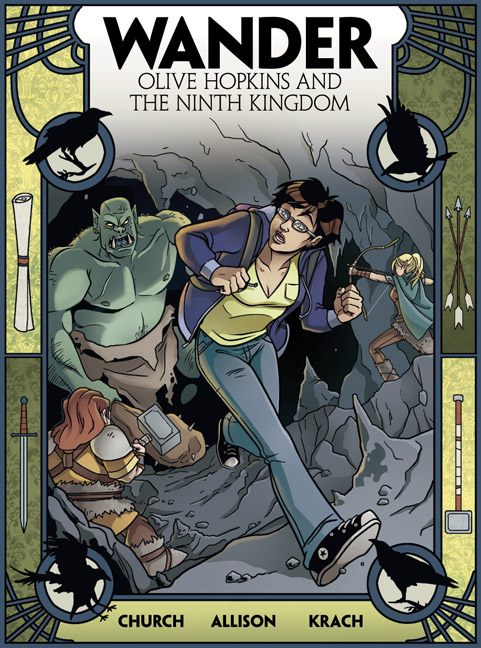
“Comics and social media are suffering growing pains alongside each other and they seem to be feeding off one another,” said Kevin Church, the writer of Monkeybrain’s Wander who is an online/social media professional as well. “Comics (are) moving away from the white superhero patriarchy (which I am all for) right as social media is giving everyone a voice (for good or for ill).”
If you frequent social networks such as Twitter or Facebook, you’ve likely seen what Church is talking about. While there’s a lot of good, beneficial conversation taking place, a whole mess of histrionics is happening on there as well. It can be a slippery slope between those polar opposites, with productive conversation devolving into GamerGaters spouting adversarial, hateful rhetoric in a hot minute.
That world can be tricky for anyone to navigate these days, but for the creatives who make themselves accessible on social and use it as a professional tool, it can be a mine-filled road leading them to disaster. A lot of good comes from it too. Many writers and artists have found collaborators, future friends, gigs, and an audience for their work on social. It’s a double-edged sword that must be wielded with care, and with the help of a bevy of creators, we’ll be exploring just how they do that.

Sometimes, social media feels like a world of pure marketing. As someone who does social media marketing for a living, I see that side all the time. Many social networks are trying to find a balance between those sharing their lives and those sharing their products or services. Facebook has embraced a pay-to-play model for brands and creatives leveraging their service as they’ve altered the algorithm which governs what you see on site to deemphasize content generated (but not paid for) by brands. Others like Twitter and Instagram are moving towards such models, and with good reason. A billion dollars may be cool, but you know what’s cooler? Quantifiable data that shows people use your service. That’s what Twitter’s stockholders would really love to see.
But for comics, social isn’t all marketing. Part is the simple act of being able to read a comic and then tweet something sharing your appreciation with the creative team. Or, you know, the opposite. But for creators in specific, it’s a multi-faceted tool they use personally and professionally, with a lot of overlap between those two. Sure, there’s marketing too, but that’s just one element of many.
Not every creator uses social in such a way though. Joe Keatinge, the writer of Shutter at Image, is one who doesn’t try to.
“The second people start thinking (of) Twitter as ‘maintaining their brand’ or whatever bullshit, it just destroys it for me,” said Keatinge. While he admits part of it is because of his lack of personal knowledge of social best practices – “I fully cop to having no idea what I’m doing on Twitter” – Keatinge’s likely not alone in keeping social out of his comic mix. But most use it professionally, including Keatinge himself at times.
For this piece, we’ll be focusing on four main networks: Twitter, Facebook, Tumblr and Instagram. While others are used—even Google Plus—those four are the most leveraged by creators. While each has substantial differences from one another, creators use them all in service of common goals. Let’s take a look at the different purposes they’re used for, and the plusses and minuses that come with using them in such a way.

One of the most attractive elements for social for both companies and the people who use the varying networks is the immense population on them. Facebook’s total user base by itself is greater than the population of China. Most of the social networks are so heavily used that organizations like Pew Internet who track their level of adoption don’t even use total numbers anymore. They track the percentage of the total online population who uses them. That’s how you know you’re big time.
So for creators, there are few better ways to develop a bigger audience than social networks like Facebook and Twitter. Take cartoonist Natalie Nourigat (Between Gears, the upcoming Over the Surface), for example. Nourigat has seen Facebook in specific help her in a big way.
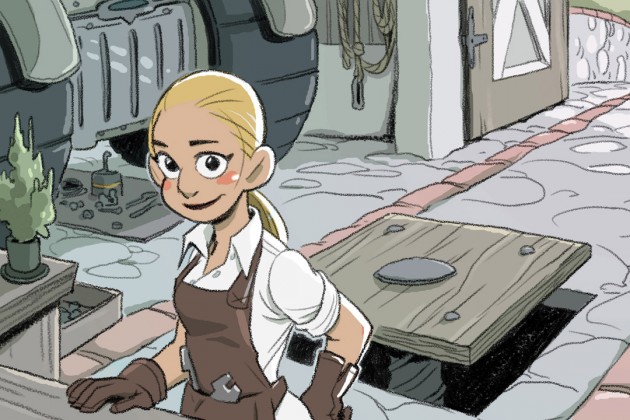
“There are almost 1 billion users who are active on Facebook daily, and users come from all over the world. It’s possible to build an international audience and reach comics fans in Africa, the Middle East, Europe, Asia, Australia,” she said.
“I like Facebook because it’s easy to share content, and if content goes viral it automatically links back to the original poster’s account, meaning that new readers know where they can find more,” she added. “It has given my website more traffic than any other social media site.”
While having that population at your disposal isn’t the same as turning them into dedicated fans, it makes things much easier for you. Social can be like the world’s biggest comic con, and one that never ends. Browsing your news feed or the Instagram search section can lead to you discovering your new favorite comic or creator just from what those around you are sharing.
Speaking of Instagram, its appeal is obvious for creators looking to spread their reach. Instagram is a visual medium, and for artists and other creators, you can share art and other media to followers. A major plus is its high user engagement rate (or how often users interact with content), which is 58 times higher than Facebook’s and 120 times higher than Twitter’s. That can help expand your footprint to potential new readers.
Nourigat and Jake Wyatt (Ms. Marvel, Necropolis) have seen success sharing their artwork and more personal photos, like ones from Nourigat’s extensive travels. That helps transform creators from a cog in a machine into a person. For someone like Chris Samnee, whom Rolling Stone named one of the Top 100 Instagram accounts, it can be a surefire way to get introduced to a much larger population in a hurry.
Twitter is for all intents and purposes the core of the ongoing conversation of the comics internet. While that’s not true in every field – much has been made of Twitter’s struggles to develop its audience and maintain a high usage rate, especially after CEO Dick Costolo stepped down recently – for most of the creators I spoke to, it’s the core of their social experience in comics.
“Twitter tends to be the one where I’m most active. A lot of comic writers and artists are on there and the conversational flow tends to be fun,” Jim Zub of Wayward fame said. “It’s a nice way to chat with readers, retailers, and professionals.”
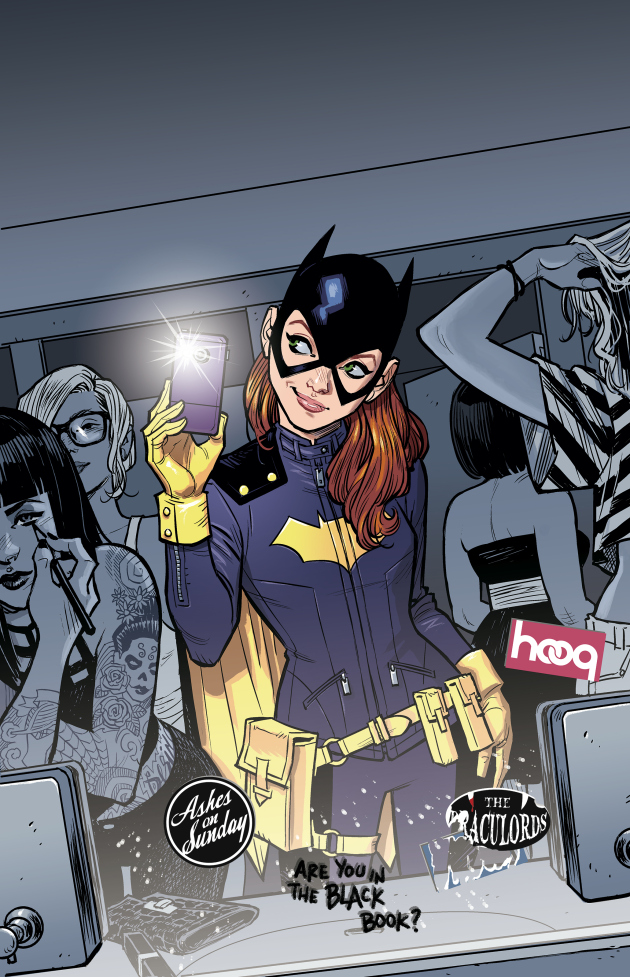 That conversation is at the core of the Twitter experience. It is the one that can lead to some of the most exciting social successes in comics, such as when Batgirl of Burnside was first announced. One of the most interesting things about Twitter is its existence as viral kindling. Buzzfeed did an interesting study on how their content flows, and they found that while it isn’t nearly the traffic generator Facebook it is, their content often breaks out on Twitter and spreads to other social networks from there. That type of activity is what we often see in both positive stories like the aforementioned Batgirl reveal and negative ones like the recent Arthur Suydam controversy. It may not be as heavily trafficked as its competitors, but Twitter carries a lot of weight within comics and beyond.
That conversation is at the core of the Twitter experience. It is the one that can lead to some of the most exciting social successes in comics, such as when Batgirl of Burnside was first announced. One of the most interesting things about Twitter is its existence as viral kindling. Buzzfeed did an interesting study on how their content flows, and they found that while it isn’t nearly the traffic generator Facebook it is, their content often breaks out on Twitter and spreads to other social networks from there. That type of activity is what we often see in both positive stories like the aforementioned Batgirl reveal and negative ones like the recent Arthur Suydam controversy. It may not be as heavily trafficked as its competitors, but Twitter carries a lot of weight within comics and beyond.
But it depends on what you’re going for. Nourigat has found that Twitter isn’t as globally successful as Facebook, which makes it less appealing when she’s promoting her work.
“A few years ago I would have said (Twitter) was the most useful social media for me (it introduced my work to a lot of new readers, and me to a lot of comics professionals!), but in recent years I’ve cooled off on Twitter,” she said. “My Twitter audience seems to be largely limited to US readers for some reason.”
Tumblr can be excellent for your work spreading like wildfire thanks to some of its sharing capabilities, as Church found out several times.
“The reblog feature helps others get the word out about your projects. I’m fortunate enough to manage a Star Trek Tumblr with over 17,000 followers and I’ll reblog from my personal Tumblr to that when I have preview pages, etc. to share,” he said. “That got a lot more eyeballs on my recent Regular Show story and it helps find audience members that are in the overlapping part of the Venn diagram.”
That’s the trick though. Your art or your comic making the rounds and getting attention on social can be easy. But converting social buzz into sales? That’s more difficult, and something many creators have struggled with. Even worse is the oft-maligned tendency of those on social media to take original art and strip the credits before sharing the work. It’s something Wyatt has had to deal with a lot, and not just on social but with other outlets using his art for profit even.
“My stuff gets used without permission all the time,” he said. “Seriously every month someone sends me examples of my work being used, for profit, illegally. I rarely do anything about it. From sites printing t-shirts with my work to German nightclubs using my art on their fliers.”
“I don’t have the time or money to chase that stuff down. I leave it alone.”
Art spreads throughout Tumblr in particular without credit all the time, and that makes it difficult for its creators to benefit. Its why artists like Jamie McKelvie (The Wicked + The Divine, Phonogram) have spoken out against that practice.
Another thing Wyatt cautions creators against is when you’re reaching a bigger audience on social, you can create an unreal, unattractive view of yourself with how you behave and act.
“I think the real danger in putting your thoughts and your work online is that you create an incomplete picture of self,” he said. “To a degree everyone creates and curates an online persona. I have real life friends–kind, thoughtful people–who appear so insufferably hip or pathologically needy or socially oblivious through the lens of their Instagram or Twitter feeds that I cannot follow them online.”
“Most internet presence is theater. Even a sincere attempt at authenticity creates, at best, an incomplete portrait. And if you’re not careful, a bad day and a thoughtlessly worded comment on Twitter can project something unintended, and even untrue to the world. You can hurt people, damage relationships, and create problems for yourself professionally without even trying.”
We see this time and time again. A creator generates a huge following on social media. Said creator garners a soapbox for them to stand on, and instead of using it in positive ways, they use it as a launching pad to jump off a cliff. In that situation, social media’s reach isn’t your friend; it’s the jagged rocks at the bottom of your leap.
Wyatt cautions creators to approach their social media presence in an informed, articulate fashion for that reason, and that they should just listen rather than wade in to a topic they may not understand sometimes.

Comic creators using social media has worked well in part because it has taken the community feel of conventions and moved that online. While creators may not necessarily find future collaborators, they may forge relationships that will be every bit as vital personally as they are professionally.
 Declan Shalvey (Injection) shared that one unique experience he had on social changed his career forever even if it didn’t involve him being hired for anything.
Declan Shalvey (Injection) shared that one unique experience he had on social changed his career forever even if it didn’t involve him being hired for anything.
“I can say for a fact that I wouldn’t be where I am today without Twitter,” he said. “Sad, but true.”
“When I was first cracking the American market, I got very friendly with like-minded artists on Twitter. So much so that we started a started a sketch blog called ‘Comic Twart‘ and I’m sure it’s that blog where a lot of American creators and editors found my work.”
For those who missed it, Comic Twart was a fantastic sketch blog featuring artists like Dan Panosian, Evan “Doc” Shaner”, Francesco Francavilla, and more sharing art drawn to a common theme. I discovered several of my favorite artists there, and that community was likely as beneficial for the other artists as it was for Shalvey.
He also shared that social reducing the distance between editorial and creative has helped.
“I like that the barriers between editors, writers and artists have thinned, making us all a lot more familiar with each other’s work and personalities,” he said. “That can be bad too of course, depending on the personalities.”
Nourigat admits that she doesn’t have the time she’d like to spend talking to fans (she has to draw, after all), but she enjoys what little she has.
“I do like feeling like there are people enjoying my work, getting immediate feedback, and not feeling like I’m creating art and stories to toss out into the void,” she said. “It’s been great getting to know individuals who are supportive and kind to me on social media.”
She has found it helps a lot at conventions with how prevalent social usage is on mobile devices.
“Being at a convention and being able to communicate to your readers, ‘I only have one ___ print left; come get it at table A-14 ASAP!’ is kind of amazing,” she said. “Tweeting photos of what’s happening, getting people pumped up in real time. It’s crazy.”
Zub likes the community aspect of social, with reservations.
“I enjoy interacting with readers and I’m generally thrilled that they reach out to let me know what they think,” he said. “Every so often the interactions can be a bit strange, but the majority of people are wonderful.”
Creating comics can be a solitary act, and people like Zub find that those more positive experiences can be just what the doctor ordered when they’re stuck in a rut. “It recharges my creative batteries and reminds me that people are enjoying the work I put together.”
With all of that positivity though comes some of the biggest negatives. Several creators have been stepping back from social because of the fierce negativity that can come with it in 2015. Shalvey’s one of them.
“I don’t think I’m alone in saying this, but it feels a little toxic right now,” said Shalvey. “It’s been more antagonistic and prone to outrage. Online media was more a place to make connections and promote your work, while maybe sparking a bit of a conversation. However, lots of people seem to be trying to have very complex conversations there but social media isn’t really the best place to have a reasoned debate; it’s where people go to shout at their laptops, and (if) everyone is shouting, no one is listening.”
“I’m also concerned about the rise of public shaming in online culture. As a result, I’ve taken a step back a little, and am using it for promotion a lot more, and am less ‘myself’. Not that I think I’m particularly controversial, but social media does not require context and that scares me a little.”
That aspect is a problem for Keatinge as well, as a couple books he read recently contextualized much of his uncomfortable feelings tied to social.
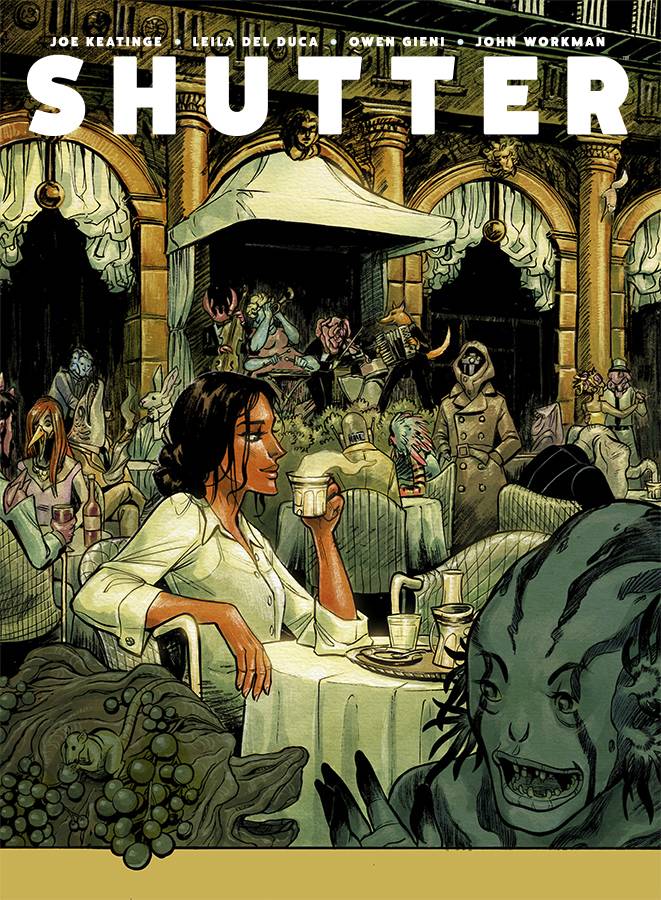 “Reading Jon Ronson’s So, You’ve Been Publicly Shamed and Douglas Rushkoff’s Present Shock was a particularly eye opening view on what social media is doing to us sociologically and psychologically, respectively, and it’s not good,” Keatinge said. “I can’t even look at Facebook, because that has seemingly turned into a 24-Hour Anger Festival.”
“Reading Jon Ronson’s So, You’ve Been Publicly Shamed and Douglas Rushkoff’s Present Shock was a particularly eye opening view on what social media is doing to us sociologically and psychologically, respectively, and it’s not good,” Keatinge said. “I can’t even look at Facebook, because that has seemingly turned into a 24-Hour Anger Festival.”
While Church believes that fans often raise valid concerns—“especially when it comes to social justice issues”—he shares that the tendency of discussions to go dark in a hurry is of concern.
“The tenor of these discussions can go from ‘reasonable’ to ‘witch hunt’ in a spectacularly short amount of time,” he said.
Part of that comes from the creators themselves, though, as there have been several high-profile writers and artists who have went with the “ready, fire, aim” method of social media, as Wyatt pointed out in the previous section.
“The instant nature of something like Twitter can lead to creators shooting off their mouths, saying things publicly that they’d previously have kept to private conversations with colleagues,” said Zub.
It’s still new to people though. As Wyatt shared, “we’re still figuring out what this stuff is and does,” and that’s an important consideration. Great things in communities come from social—Wyatt cites what happened in Ferguson as an example of its massive potential—but with that comes a lot of growing pains. Part of those rough edges will smooth out in time, but as Church shared, a big part of positive change will come with consideration from both sides.
“Concerned parties can do well to remember that they’re engaging another person, just like creators can remember that they don’t get to define if another person is hurt.”
It works both ways, of course. While Church has seen both good and bad from creators—“I see creators that are wonderful with how they engage their audience and I’ve seen complete social media meltdowns”—he’s also seen fans themselves play both sides.
“Fan entitlitis seems to be getting worse and I’m occasionally shocked at what fully-grown human beings will say to a creator just because they wrote or drew a scene they didn’t like,” he said.
You can see this everywhere—just read what “fans” said to Marguerite Bennett on Tumblr—and that type of vitriol flowing unchecked on Twitter is why writer Matt Fraction ended up leaving it.
“I’ve spoken with a lot of higher-profile creators about this, and some of them have gone to therapy and even taken medication in response to online backlash and vitriol over their work,” Wyatt said.
Just like creators could do more to think about what they say sometimes, so can the fans.

In the comic artist survey we ran, 63 percent of artists shared that they use social media as a way to make contacts. Many of the creators I spoke to for this piece shared that experience, and much of that comes from having a direct way to communicate with editors.
While Shalvey hasn’t picked up any jobs from social media, he has had offers via direct message (or DM) on Twitter (including a dream job from Marvel) and his Deadpool gig came from a Marvel editor asking for his email via DM.
“(DMing is) like a less informal email. It can also help you get familiar with editors, what they’re into, what kind of work they like, with an added familiarity that can really help from a professional standpoint.”
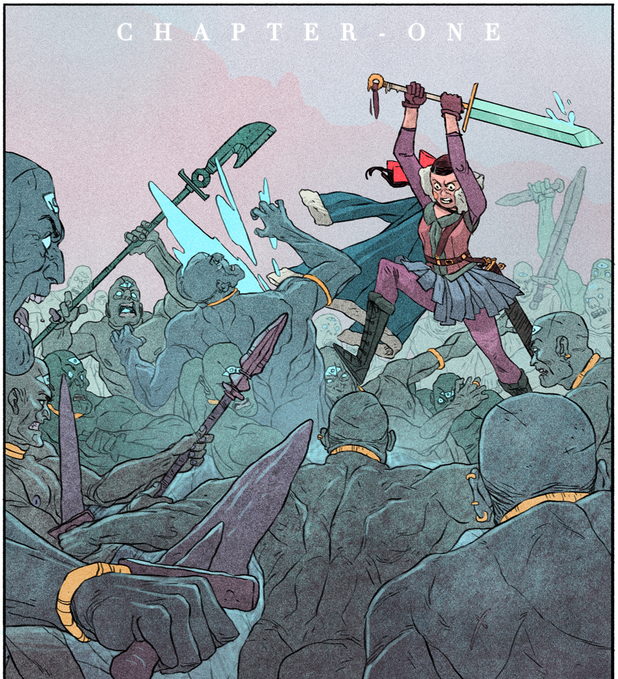 Wyatt, on the other hand, can thank social media for a lot of the jobs he’s been hired for.
Wyatt, on the other hand, can thank social media for a lot of the jobs he’s been hired for.
“I got my literary agent and my first book deal from a Tumblr post. I got my first Marvel gig through fanart of mine floating around on Tumblr. I was invited to pitch at Nickelodeon because of some stuff I’d been developing with some friends on Twitter. I got my first job in animation, boarding on Ninja Turtles, because a director saw my work on Deviantart and noticed I was living in LA,” he said. “Each of these in turn led to personal relationships that led to other things, but at the root I owe basically my entire career to the internet, in one way or another.”
“It’s the land of opportunity.”
While Nourigat has never been hired for jobs because of social, she has met collaborators she eventually worked with because of it.
“I’ve actually gotten work from joking around with a writer on Twitter about a story we could do!” Nourigat said. She’s not the only one. Zub and Keatinge also met future collaborators on social.
Keatinge picked up a job from social – “I did get the job for the ‘Thanos’ comic that never came out from Steve Wacker seeing me on Twitter” – but it has negatively impacted him as well. He shared that his comments on Twitter ensured he’d never be hired by DC. Like I said, plusses and minuses.
Another minus to consider is the visible form of procrastination social media provides. While killing time on occasion isn’t bad, it can be if the wrong person sees you, Zub shared. “As much as fans are on social media, editors/publishers are too and if they see that you’re not hitting deadlines while gabbing up a storm online it can look really bad.”
Several of the creators spoken to for this piece described social media as a time suck – “Sometimes I have to consciously stay away from Twitter in order to get anything done,” Wyatt shared – with some keeping Twitter open as they work or regularly checking in on the conversation from mobile devices. As Zub said, it isn’t a bad thing unless it’s impacting your work, but some do let the allure of social happenings eat away at valuable work time. And just like you can get hired because of social, it can be a contributing factor to you either being fired or not hired, as Marvel talent scout C.B. Cebulski tweeted about. That’s worth keeping in mind when you’re contemplating your next magnum opus tweet.

While this is the part many don’t want to see on social, the potential to market comics—especially in this time of creator-owned growth—is too vast to not be leveraged. Creators like Rick Remender openly admit that if it weren’t for this aspect of social, they wouldn’t even be on it. I don’t blame them. Most everyone I spoke to uses social for marketing their work, and the results have been all over the place.
Nourigat shared she has seen benefit, with her audience growing in recent years due to posts of hers going viral on Tumblr and Facebook. However, she had no specific examples where it boosted sales of her work. Keatinge and Shalvey have used social to promote their new projects, but Shalvey admitted even doing that is difficult because of the elongated ordering process comics follow. Church has used social to boost his digital title Wander, but much to his admitted consternation, the book has seen little lift at all from it.
Strangely, the person who has enjoyed the most benefit from social didn’t even get it from promoting the comics themselves.
“New readers have discovered my work thanks to the viral nature of some of my How-To posts about creating comics,” Zub said. “It’s had a massive positive impact overall.”
Zub factors social into his overall plan for promoting his work, but the fact he’s seen more response from content that isn’t related to his work going viral matches Nourigat’s experience. Maybe the key to fostering an audience for your work on social isn’t tied to doing that directly, but by using it to bolster your own reach and name?
Even that is a fine line, though, as Wyatt shared earlier. Like with anything, using social for marketing is all about moderation and finding a balance. If you’re a shill for yourself 24/7, you’ll matter less and less to your audience. At the same time, it’s important to keep it real, and not spend too much time cultivating your personal brand. In Keatinge’s words, “that’s gross.”

For every good thing on social, there is a negative component fighting against it. That’s the way things are for everyone, not just comic creators. But because of their nature and the virality of “Creators Gone Wild”, writers and artists have a lot more to lose than you or me. So should creators use it?
Like much of what is related to this topic, the answer is “it depends.”
“In today’s climate? It’s kind (of) mandatory I think,” Shalvey said. “It’s unfortunate, but if you’re trying to promote your work then you really have to use social media, or you’re doing yourself and your work a huge disservice.”
“There’s just too much competition out there, and if you’re not seen to be making work, it’s assumed it’s because there’s no appetite for it.”
“If you’re a new creator? It’s hugely important,” said Wyatt. “I have friends that have garnered an audience and become Internet creators, working for an online fan base outside of the mainstream. And living comfortably on that.”
“Social media may not net you a fan base that can support your work. You may not become an Internet phenom. But it will definitely connect you with editors, peers, and potential collaborators, and those relationships can also change your life.”
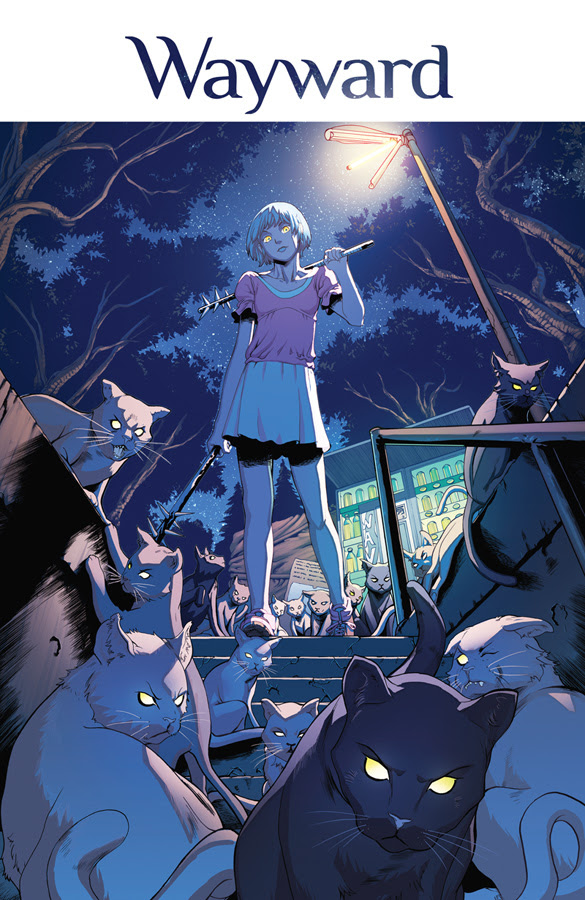 “For new creators I think it’s pretty crucial. I’m sure a creator could make headway without social media, but it would definitely be more difficult,” said Zub.
“For new creators I think it’s pretty crucial. I’m sure a creator could make headway without social media, but it would definitely be more difficult,” said Zub.
Nourigat believes it depends on the person.
“I see a lot of stellar artists working in studios who don’t put much effort into social media and, presumably, are doing perfectly fine,” said Nourigat. “But I think if you have an unconventional job situation, if you’re freelance or trying to break in or grow your audience, it’s extremely important.”
Church is more moderate about it, saying, “social media is a nice adjunct, but I genuinely think that the work should do the heavy lifting for you. Stuart and Kathryn Immonen have moved off Facebook and Twitter entirely and are just occasionally posting to Tumblr and they seem to be doing just fine.”
When asked about how important social media is for creators, it’s not surprising that Keatinge didn’t think it was too important. His answer was pretty rad though. “Brian K. Vaughan does not have a Twitter account.”
As a social media expert by day, I’d recommend newer creators use social to their own advantage, as a lot can be gained from it. It’s a great way to get your name and work out to a larger audience, and it can help get you jobs and find potential collaborators. Your career could be made or broken depending on how you leverage it, and it’s excellent for cultivating an audience to support crowd-funding options like Patreon and Kickstarter.
If I was an older creator still in the game, on the other hand? No way in hell. At that point, there’s more you can lose from your online presence than there is to gain. Just ask John Byrne.
Whoever you are, if you use it, just remember this tip from Zub that everyone—not just creators, but everyone—should follow.
“Always remember that anything you post online is ‘public’ in some manner of speaking,” he said. “Think of it like a super-charged version of the Golden Rule: ‘Treat others how you would wish to be treated.’ You can’t avoid every negative interaction, but you’ll definitely save yourself a lot of unneeded stress.”

Social media is amazing. It’s a simple, free tool which we can use to correspond with people around the world we know or want to know. It’s a way we can share thoughts and art, find jobs and friends, and changes our lives and the world. But mostly we don’t. That we use it in such negative ways is more a condemnation of us as people than social media itself. That could change, though, as it’s still pretty new, just like this widespread success is to comics.
Those growing pains could lead to the bad balancing out good indefinitely. Or people could figure it out and things could get better. Those are macro ideas in a medium that is by nature micro. While many blame social media for at least part of society’s ills, that’s like blaming the weather for your hangover. You’re doing it to yourself.
Social media is like one of those old “choose your own adventure” books. You could take the wrong path and get killed by the Minotaur (AGAIN!), or you can make your way to the end of the maze this time. Your choices define your success and how well things work out for you. If you are continuously surly or sexist or generally terrible, odds are, your social experience will be a rather unfulfilling one. But it could be pretty grand if you want it to be.
“This stuff is changing individual lives in wholly unforeseeable ways,” Wyatt said. “There’s a guy in Russia, a digital painter, making over $2,500 a week sharing his daily photoshop studies through Patreon. I know Hollywood concept artists who don’t make that.”
“I have a friend who quit his job a few years ago to sell ukiyo-e inspired video game fanart through Kickstarter. It launched an ongoing business that’s his main source of income now. He’s paying off his house with that,” he added. “So yeah, the environment continues to change at the individual, national, and global level. And I think that’s great. It’s dangerous, because the Internet is a mercurial place where you can lose as big as you can win, and you have only a tenuous sort of control over either outcome. But win or lose, regardless of your other advantages, if you have an Internet connection, you can come to the table and play.”
“And that’s pretty fantastic.”
Social media could change everything for comic creators, for good or ill. It could take the success they are seeing to the next level or burn all of the progress varying writers and artists have seen to the ground. It’s that powerful if one chooses to leverage it. While aspects of it exist completely outside of their control, much of its effectiveness for creators comes out of the choices a person makes. That’s what it ultimately comes down to, though. Choices. How it works for creators and the fans of their work depends on the ones they make going forward.
Thanks to Declan Shalvey, Natalie Nourigat, Jake Wyatt, Joe Keatinge, Kevin Church and Jim Zub for helping with this piece. Art featured in the piece all comes from those creators, save for the Batgirl #35 cover from Cameron Stewart, the Shutter cover by Leila del Duca, the Wander cover from Grace Allison, and the Wayward cover by Steve Cummings.. Look for a piece later today on how creators can better leverage social.
